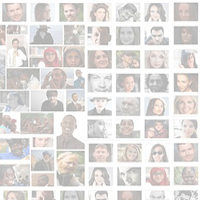Social Media Scheduling Convenient or Costly?

Each day social media managers walk the tight rope between over saturating their networks with posts (running the risk of losing their audience) and not posting enough (and not fully capitalizing on social media's potential). Many social media professionals navigate this fine line through the use of scheduled posts.
To evaluate whether scheduled posts are a viable solution, it is important to know what issues it can solve (and what problems it may cause too). One of the most obvious reasons to schedule posts, of course, is to save time. Social media management is a very demanding aspect of today's market and its demand will likely increase.
The Whole Brain Group, a full-service marketing firm, recently published its Sensible Social Media Checklist (2.0) and it provides a strong benchmark for an average level of participation. For Twitter, it recommends at least three new tweets daily, re-tweeting two interesting tweets a day and following 10 new people per week. For Facebook, the company suggests to find and "Like" five new pages, update the company page status daily, post about two interesting topics related to the business and ask people to Comment, Like or Share posts. That's dozens of daily tasks on these two networks alone. The company also offers checklist items for YouTube, Pinterest, Google+, LinkedIn and a company blog (to view the checklist go to https://wsm.co/QYzIrF).
What this checklist indicates, is that managing a company's social media networks is a full-time job. However, most resource-strapped companies are making do by appointing someone in-house to manage these efforts. Thus, this extra work is on top of this person's existing workload. This person needs some help. And help, like it has since the beginning of time, comes in the form of tools.
Scheduling posts can save time; and industry tools, like many of those included in Website Magazine's Big List of Social Media Software 2012 (https://wsm.co/bigsocial), can help manage the different networks via one dashboard. This ensures a company's social participation is extended to multiple networks, while providing a social media manager an opportunity to know what resonates with their community - thanks to built in analytics.
Another reason why a company may turn to scheduling social media posts is for help developing a formal, long-term social media strategy, as well as more engaging, meaningful posts. Companies that think further out (rather than racing to meet its self-set social media quota), can hone in on the environment they want to create and likely increase engagement organically in return.
For example, let's say a social media manager posted a photo about National Brownie Day on Facebook. The Shares, Likes and Comments went through the roof. After all, who doesn't love a good brownie? In the future, with scheduled posts, that manager can schedule these novelty days far in advance, so the business-related post that follows it can be more deliberate and, hence, more creative.
Scheduling social media posts is not without its limitations (more on that later). In this data-driven world we're living in, however, there's more than enough data to warrant scheduling posts - especially since we know exactly what time of day to schedule them. Don't we?
Can I Get the Time?
An important part of the social media scheduling balancing act is time. In fact, it might be the most crucial. One's message may be meaningful and engaging, but there has to be an audience to react to it, or the message (and the engagement opportunity) is wasted.
The latest Bit.ly metrics provide exact times for when messages will get higher click-through rates (the full report can be found here, https://wsm.co/R78noo). Clickthroughs are really the golden goose of social media, and companies that can attract fans/followers/connections/circles (you name it) off the social network and onto their website, where they can actually convert them, are those that will excel day in and day out. With that said, note these specific Bit.ly findings:
Twitter: The best time to tweet (for click-throughs) is early afternoon on Monday through Thursday (1-3 p.m.). Additionally it states that unless it's breaking news, avoid tweeting important content after 8 p.m. and forget about after 3 p.m. on Friday and the rest of the weekend.
Facebook: As for Facebook, generally links posted midweek from 1- 4 p.m. receive the highest click-through rates. But the absolute highest average click-throughs is Wednesday at 3 p.m. Additionally, Facebook traffic rises about 9 a.m. and fades after 4 p.m.
While this is valuable, well-supported information, one must consider the post's content, the role geography (time zones) play, and the type of update itself (e.g. visual, textual, hard-sell, soft-sell), which are not discussed in these findings. Another factor is the unique characteristics of a company's social audience.
Atomizing Audience Insight
Like any good assistant, the AutoSchedule tool from HootSuite, a social media dashboard, helps its professional users gain valuable insights into their audiences, with little work from the user.
"Scheduling is really dependant on your audience," said Ryan Delmaire, manager of global customer services for HootSuite. "The HootSuite AutoSchedule algorithm uses a combination of your past activity and the activity of your followers, whereas many automatic scheduling tools on the market focus on follower activity only. This plays a big part in what makes AutoSchedule unique - where other tools may start posting 'optimally,' they may not mirror your regular social media use pattern.
"AutoSchedule keeps users productive. Instead of having to schedule multiple messages multiple times, the technology uses a logical pattern to post content on your behalf. If you know that your links are more likely to be clicked at a particular time, HootSuite lets you schedule accordingly to maximize the penetration of your content."
Set It, Don't Forget It
Even with all consideration made of one's audience, scheduled posts must be monitored to be truly effective. A Lab42 survey reported that 82 percent of those surveyed said Facebook is a good place to interact with brands (see sidebar). Interact being the optimal word. Scheduling can't come at the cost of not actively conversing with those engaging with a post.
Additionally, scheduling, in all its time-saving glory, has to be flexible. Plenty of posts can be scheduled in advance, but it can't be the only method of social media participation as companies risk losing perceived authenticity when they miss out on, or outright avoid, the opportunities that arise last minute.
There are also distinct differences across verticals. What's right for one company may not be for another. It's a fine line social media workers walk, but with planning, patience, and above all, testing/analysis, there's nothing holding anyone back from using social media networks to garner engagement, click-throughs and conversions.

Subscribe to Our Newsletter!
Latest in Social Media










